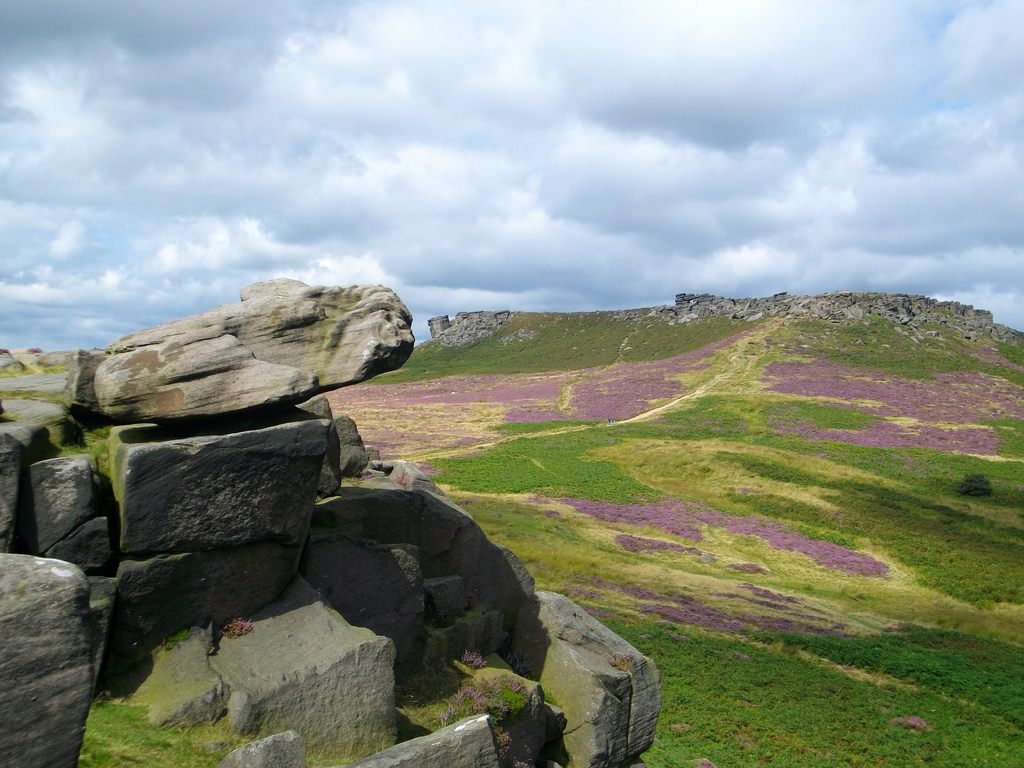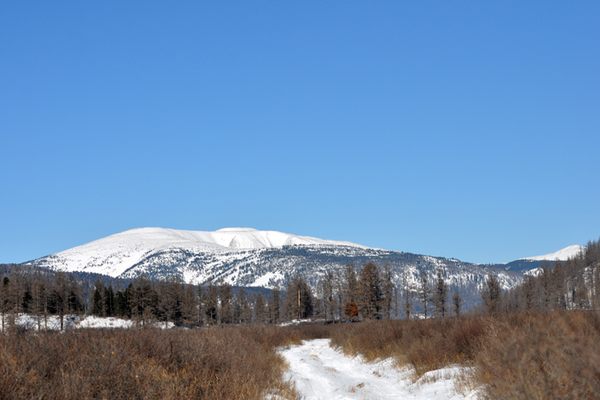The Hidden Signs That Mark Britain’s Ghost Forests
Weird tree shapes, specific plants, and other clues help environmental researchers spot where woods once were.

It’s always nice to come across a bluebell. With their dainty dangling heads and curved petals, they’re a welcome pop-up in gardens, brighten highway verges, and form purple carpets over otherwise monochrome fields.
But when you spot a bluebell in Britain, it’s not always just a pretty diversion. Sometimes, they’re the only visible sign that you’re treading through the middle of a ghost forest.
Once upon a time, Britain was covered in woods—and those woods were full of people. ”For millennia, the woods were at the centre of society and economy in ways which today we can barely conceive,” writes Ian Rotherham, an environmental studies professor at Sheffield Hallam University. Thanks to the ways in which these people managed the land—and the ways in which the trees and plants, over centuries, have managed themselves—we can spot the traces the woods left behind, in contemporary parks, fields, and even cities. That is, if we know what to look for.
Rotherham has spent about 30 years squinting at barren fields and roadside verges, trying to discern the distant past by looking closely at the present. As he details in a recent paper in Arboricultural Journal, he divides the multilayered landscapes he seeks into two categories: “shadows” and “ghosts.” Each term denotes a particular land use history, and comes with its own set of telltale signs.

In 1086, King William commissioned the creation of the so-called Domesday Book, which inventoried all of his kingdom’s assets, including wooded commons and pastures, where workers would go to graze livestock, harvest firewood, and burn charcoal. Signs of these early natural-cultural spots, where particular types of human activity intersected with particular types of wilderness, can be seen today. Rotherham calls these traces “shadow woods.”
Ghost woods underwent a more deliberate change. After the Domesday Book was published, the Normans began separating the wooded commons out into more discrete areas, sorting them according to landscape type. By 1235 AD, after much haranguing by the local barons, King Henry III had passed the “Statute of Merton,” which allowed lords to enclose parts of this land, including forests, for their own gain, keeping the plebeians out. This “fixed for all time what was previously a very fluid landscape,” says Rotherham. “Ghost woods,” he explains, are the remains of these essentially privatized lands, which the lords often tried to turn into pasture.
So how do you spot a ghost wood? Some clues are on paper—old maps and estate records can let you know whether the space you were standing was once someone’s private stand of trees. Court rolls might reveal conflict over a space, or paintings of the area may feature a tantalizing woodland in the background. The Domesday Book itself is full of hints (you can even search within it at the National Archives website).

Others require a different kind of detective work. Keep an eye out for “indicator species,” shade-friendly plants that tend to crop up during and after long periods of woodland cover. Which plants count as indicators varies by region—in Rotherham’s most common place of study, upland England’s Peak District, he and his teams look for holly, honeysuckle, and common cow-wheat, a yellow-flowered, high-stalked plant. (Cow-wheat is pollinated by ants, so its seeds seldom stray far from their origin point.)
It’s also worth taking a second look at any trees around. Individual trees often live for hundreds of years, and bear signs of past use. Keep an eye out for coppices—trees that were once cut near ground level to encourage the regrowth of smaller sticks, which were then harvested for firewood. What once were skinny stems are often now full-grown trees, arranged in a ring around their former base. Trees with corkscrewed trunks or thin branches that stick straight out may have once been grazing trees.
On their own, none of those things make a smoking gun—Rotherham piles up archaeological, ecological, geological and historical evidence before he’ll make a case for a spot as a genuine ghost or shadow wood. But with an educated eye, what was once just a weird lumpy tree will whisper clues about its past relationships. And although Rotherham has focused his studies in England and Scotland, he’s quick to point out that all landscapes have history that can be divined from careful examination. Much of his work has been aided by citizen scientists, who have learned to read the land.
If you’d like to see good examples of ghosts and shadows, the Peak District, at the southern end of the Pennines, is a good bet. At Birchwood, in the Derbyshire Hills, you can spot 800-year-old trees, gnarled by human use. Around Matlock, there are remnants of old white charcoal pits. Other researchers have been looking there for evidence of a specific shadow wood, called Deadshaw, that supposedly had “hardy trees” and lasted into the 19th century. So far, they haven’t found quite enough evidence to pinpoint it—but Rotherham hasn’t lost hope.
“The ghosts are there,” he writes. “You only have to look.”
Update, 12/23 - This article has been updated to reflect further insights on ghost wood history from Dr. Rotherham.

















Follow us on Twitter to get the latest on the world's hidden wonders.
Like us on Facebook to get the latest on the world's hidden wonders.
Follow us on Twitter Like us on Facebook